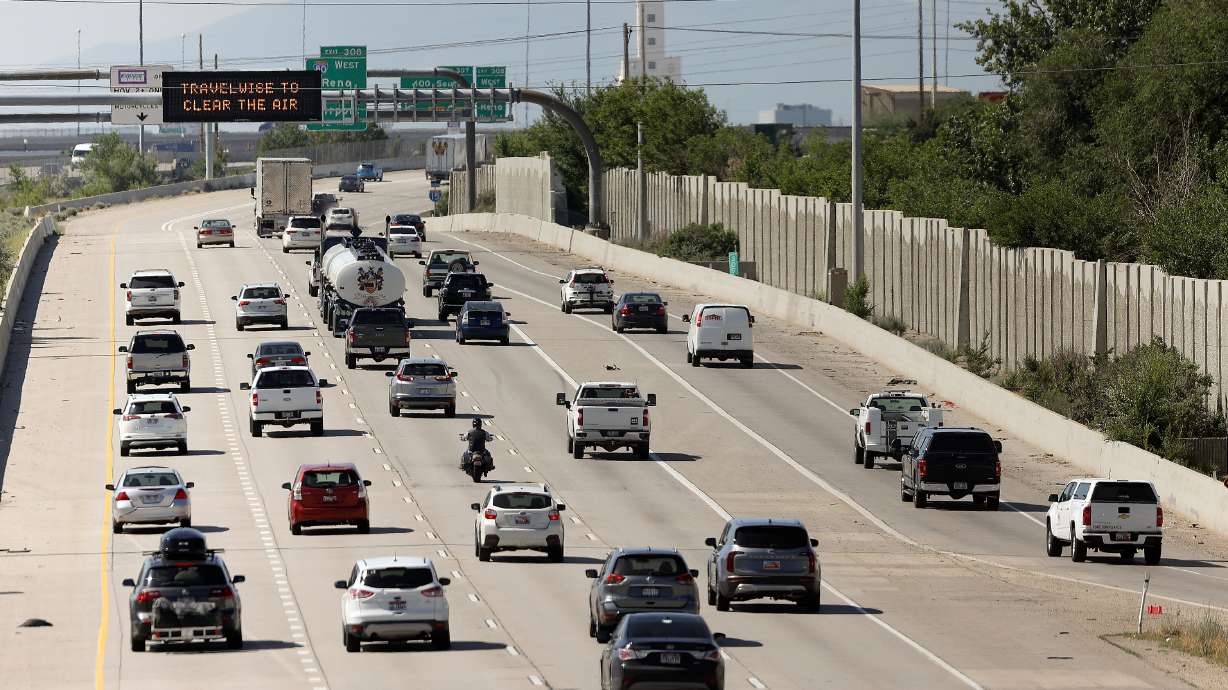Estimated read time: 4-5 minutes
This archived news story is available only for your personal, non-commercial use. Information in the story may be outdated or superseded by additional information. Reading or replaying the story in its archived form does not constitute a republication of the story.
SALT LAKE CITY — This year's July 4 weekend travel could be record-breaking.
AAA projects that 50.7 million Americans will travel at least 50 miles from their home during the Fourth of July weekend, potentially setting new records for both road and air travel. Should its forecast come to fruition, it would represent a 3.7% increase from pre-COVID-19 pandemic figures in 2019 and a 4.3% jump up from last year's final totals.
Some of this is because July 4 falls on a Tuesday this year, and the calculations are based on travel during a five-day stretch between Friday and Tuesday. But Brian Ng, senior vice president of membership and travel marketing for AAA Utah, says travel is also in high demand right now.
"Despite limited inventory and airfare soaring 50% higher than last year, consumers are choosing not to scale back their travel plans. This holiday weekend, there's going to be a huge influx in travelers, so it's important to take advantage of available resources to get the most out of their trips," he said in a statement.
Why Utah anticipates 'minimal' impacts
A record 4.17 million are expected to take to the skies between Friday and Tuesday, according to the AAA forecast; however, Salt Lake City International Airport is not anticipating long lines at Transportation Security Administration checkpoints because of where July 4 lands during the week.
"Since the holiday falls on a Tuesday, we are seeing passenger numbers spread out over the next few days rather than one big travel day," Nancy Volmer, the airport's spokeswoman, told KSL.com.
She adds that Thursday and Friday are the busiest days, though not at "record-breaking" volumes.
This is also why Utah Department of Transportation engineers don't believe there will be as many delays as some of the other recent holiday weekends, even though automobile travel is expected to account for about 85% of all holiday travel this year.
UDOT spokesman John Gleason said this is expected to "split" traffic over multiple days. People may head out on Thursday or Friday nights and return either on Monday, Tuesday or even Wednesday.
"We're a bit fortunate, I think, with where the holiday falls," he said on KSL NewsRadio's "Dave and Dujanovic" Thursday. "What that means is that this traffic is really spread out throughout the period of four or five days there, and so we're really not anticipating any major delays."
Still, the agency does project congestion delays of up to 10 minutes on northbound I-15 in Davis County from 2 p.m. to 7 p.m. and in Salt Lake County from 3 p.m. to 7 p.m. on Friday, as well as southbound I-15 near Nephi from 2 p.m. to 5 p.m.
The agency is planning to suspend all construction and open as many lanes as possible during the five-day stretch as well; however, I-15 in Nephi will be reduced to one lane in each direction beginning on Wednesday, while the lanes are shifted on I-15 between Parrish Lane in Centerville and 200 West in Farmington for various projects.
Lanes on I-80 are shifted between 1300 East and 2300 East and split on I-215 between 3300 South and 4500 South in Salt Lake County, as a result of another project there. Eastbound U.S. 40 is also reduced to one lane near Jordanelle Reservoir while the driving surface of the bridge over Provo River is replaced.
Utah's gas index
The cost of gas is another thing possibly fueling this year's record travel forecast.
AAA lists the national average for a gallon of gas as $3.54 per gallon, which is still relatively high when compared to historical records, AAA spokesman Andrew Gross said Thursday. Yet it's also about $1.30 cheaper than it was heading into the holiday weekend last year. Americans may feel more inclined to travel by vehicle this year because of this difference.
"Despite currently elevated prices, drivers are not cutting back on travel this summer," he said.
The organization listed Utah's average cost of a regular gallon of gasoline at about $3.97 on Thursday, which is almost 43 cents per gallon above the national average but also $1.21 below the state's average this time in 2022. In fact, Utah's all-time highest gas price of $5.26 per gallon came on July 1, 2022, amid record inflation at the time.
This time around, the Wasatch Front and northern Utah join central Utah in having the cheapest average fuel prices, while it's most expensive in south-central and most of eastern Utah, according to AAA data accessed on Thursday.
Where gas is the cheapest in Utah
- Juab County: $3.86
- Utah County: $3.90
- Sevier County: $3.94
- Salt Lake County: $3.94
- Weber County: $3.94
Where gas is the most expensive in Utah
- Rich County: $4.39
- Wayne County: $4.30
- Beaver County: $4.24
- Garfield County: $4.22
- Piute County: $4.21
Nationwide, gas is the most expensive in Washington, which has an average cost of nearly $5 per gallon. Its average is about $2 per gallon more expensive than the cost in Mississippi, which has the cheapest average heading into the holiday weekend.









